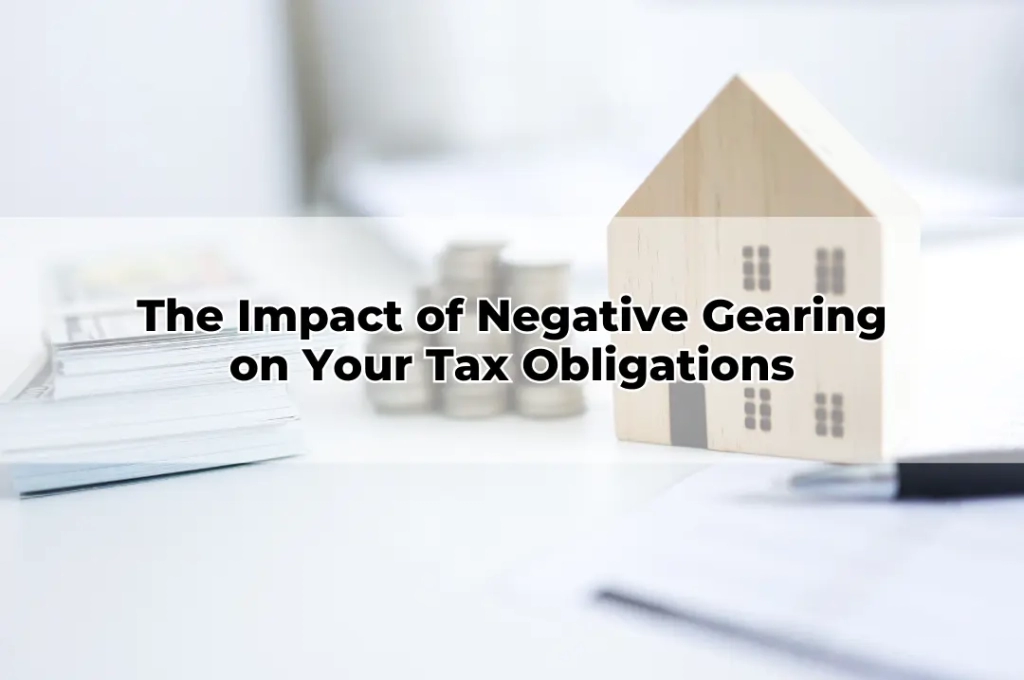The Impact of Negative Gearing on Your Tax Obligations
Table of Contents
ToggleNegative gearing is a widely used investment strategy in Australia, particularly within the property market. While it offers potential tax advantages, it also carries financial risks that require careful consideration. Understanding how negative gearing affects your tax obligations can help you make informed financial decisions and optimise your investment portfolio.
What is Negative Gearing?
Negative gearing occurs when the costs associated with owning an investment property exceed the income generated from that property. This results in a net loss, which can be offset against other taxable income, reducing overall tax liabilities. The strategy is commonly employed by investors seeking capital gains in the long term.
How Negative Gearing Affects Your Taxable Income
Investors using negative gearing can deduct property-related expenses from their total taxable income. These expenses may include loan interest, property management fees, depreciation, and maintenance costs. By reducing taxable income, negative gearing can lead to a lower annual tax bill, making it an appealing strategy for high-income earners.
Key Tax Deductions Associated with Negative Gearing
The Australian Taxation Office (ATO) allows various deductions for negatively geared properties, including:
- Interest on the investment loan
- Depreciation of assets and property structure
- Property management and maintenance costs
- Council rates and insurance Understanding these deductions helps investors maximise their tax benefits while ensuring compliance with tax regulations.
The Role of Depreciation in Negative Gearing
Depreciation is a non-cash deduction that allows investors to claim the diminishing value of the property and its assets over time. Capital works deductions and plant and equipment depreciation can significantly enhance the tax effectiveness of negative gearing. Engaging a qualified quantity surveyor can help investors accurately assess and claim depreciation.
Negative Gearing and Capital Gains Tax Implications
While negative gearing provides short-term tax benefits, investors must consider capital gains tax (CGT) when selling their property. Profits from the sale of a property held for over 12 months attract a 50% CGT discount, but careful planning is essential to minimise tax liabilities. The balance between tax savings during ownership and potential CGT obligations upon sale must be strategically managed.
The Impact of Interest Rate Changes on Negative Gearing
Interest rates play a crucial role in the effectiveness of negative gearing. When rates rise, loan repayments increase, potentially deepening the investment loss. Conversely, lower interest rates reduce the financial strain. Investors should assess interest rate trends and factor in possible fluctuations when employing a negative gearing strategy.
Risks and Limitations of Negative Gearing
While negative gearing can provide tax relief, it is not without risks. A poorly chosen investment property may not appreciate in value, leaving investors with long-term losses. Additionally, tax benefits do not directly offset cash flow deficits, requiring careful financial planning to ensure sustainability.
Negative Gearing vs. Positive Gearing
Positive gearing occurs when rental income exceeds expenses, resulting in a taxable profit. While this means paying more tax, it also ensures consistent cash flow. The choice between negative and positive gearing depends on an investor’s financial goals, risk tolerance, and market conditions.
Government Policy and Potential Legislative Changes
Negative gearing has been a subject of political debate, with various governments proposing changes to its tax treatment. Investors must stay informed about potential policy shifts that could impact their tax benefits and investment strategies. Consulting a financial adviser can help navigate legislative uncertainties.
Is Negative Gearing Suitable for You?
Not all investors benefit from negative gearing. Factors such as income level, investment horizon, and risk appetite influence its suitability. A thorough financial assessment, coupled with professional advice, ensures that negative gearing aligns with long-term wealth-building goals.
The Role of a Financial Adviser in Negative Gearing Strategies
Engaging a financial adviser ensures a well-structured investment plan that considers tax implications, risk management, and long-term financial objectives. A professional can provide tailored advice to optimise the benefits of negative gearing while mitigating potential downsides.
Conclusion
Negative gearing can be a powerful tool for property investors, offering potential tax advantages while carrying inherent risks. Understanding its impact on tax obligations is crucial for making informed investment decisions. Seeking professional financial advice from a Toowoomba Financial Adviser or an Online Financial Adviser ensures a strategic approach that aligns with your wealth-building goals. If you’re considering
negative gearing, consult Wealth Factory for expert guidance tailored to your circumstances.



